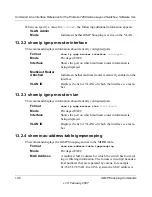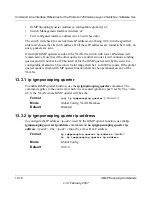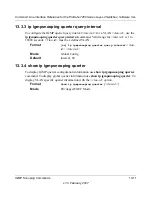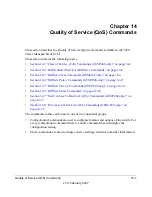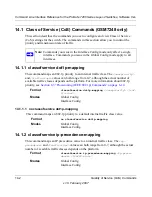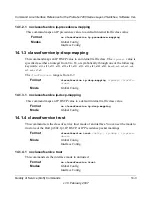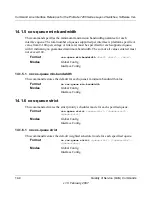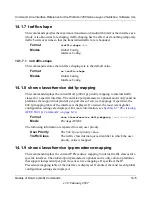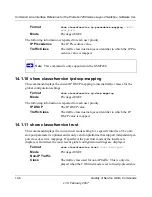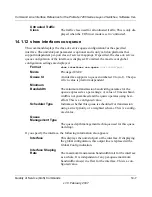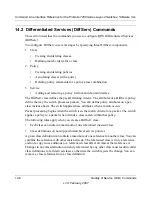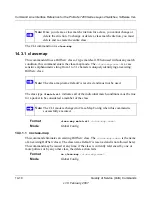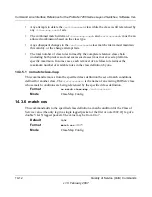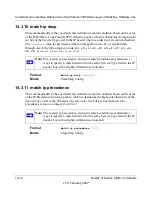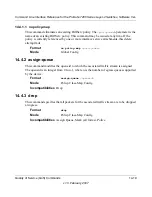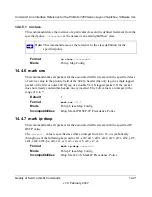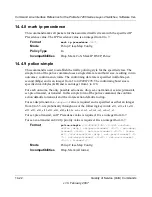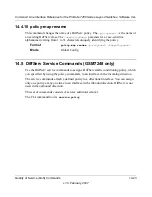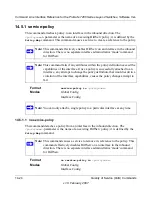
Command Line Interface Reference for the ProSafe 7200 Series Layer-2 Switches, Software Ver-
Quality of Service (QoS) Commands
14-9
v1.0, February 2007
The only way to remove an individual match criterion from an existing class definition is
to delete the class and re-create it.
14.2.1 diffserv
This command sets the DiffServ operational mode to active. While disabled, the DiffServ
configuration is retained and can be changed, but it is not activated. When enabled,
Diffserv services are activated.
Format
diffserv
Mode
Global Config
14.2.1.1 no diffserv
This command sets the DiffServ operational mode to inactive. While disabled, the
DiffServ configuration is retained and can be changed, but it is not activated. When
enabled, Diffserv services are activated.
Format
no diffserv
Mode
Global Config
14.3 DiffServ Class Commands (GSM7248 only)
Use the DiffServ class commands to define traffic classification. To classify traffic, you
specify Behavior Aggregate (BA), based on DSCP and Multi-Field (MF) classes of traffic
(name, match criteria)
This set of commands consists of class creation/deletion and matching, with the class
match commands specifying Layer 3, Layer 2, and general match criteria. The class match
criteria are also known as class rules, with a class definition consisting of one or more
rules to identify the traffic that belongs to the class.
Note:
The mark possibilities for policing include CoS, IP DSCP, and IP
Precedence. While the latter two are only meaningful for IP packet types,
CoS marking is allowed for both IP and non-IP packets, since it updates
the 802.1p user priority field contained in the VLAN tag of the layer 2
packet header.
Summary of Contents for GSM7224 - Switch
Page 4: ...v1 0 February 2007 iv...
Page 20: ...xx v1 0 February 2007...


